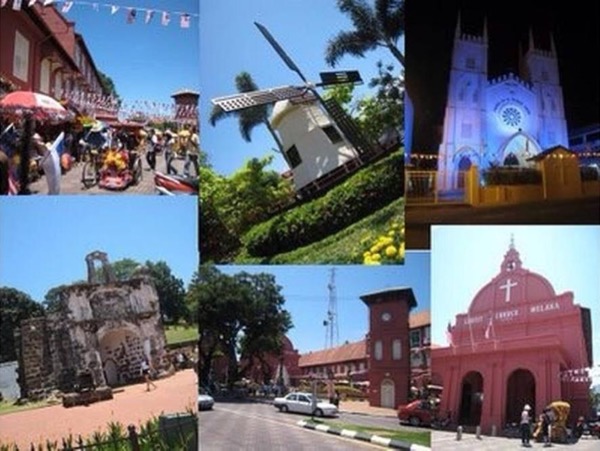Ancient Malacca temple hopes to be marked on tourist map
Huge incense burner (left), placed at the spot since 1892, at the 200-year-old ancient San Duo Temple in Malacca. (Right) Stela to record every rebuild period of the temple.
Sin Chew Daily/Asia News Network
Friday, Mar 30, 2012
MALACCA - The Jalan Tokong Besi in Chinatown of Malacca is also known as Harmony Street, as worship places of three religions are located peacefully along the same street. Among them is 200-year-old ancient San Duo Temple.
The street also symbolises the harmonious coexistence of Buddhism, Taoism, Islamism and Hinduism in Malaysia.
The San Duo Temple is seldom mentioned due to the lack of propaganda. However, visitors always being impressed by the temple's rich historical heritage. Therefore, the Malacca Kwang Tung Huay Kuan entrusted to manage the temple hopes that the temple can be included in the Malacca tourist map.
The San Duo Temple has 217 years of history and was formally called the Qing Long Hui when it was built in 1795. It was later renamed as the San Duo Temple after the expansion was completed in 1857.
Many utensils in the temple, including incense burners and plaques, are originated from the Chinese Manchu Dynasty and being placed at the temple in 1891. The entrusted body also spent thousands of ringgit last year to repair relics in the temple.
(Left) "The 18th years of the Guangxu Empire" is clearly engraved on the beam. (Right) Ancient plaques hung on a wall of the temple's main hall shine after being repaired in recent years.
Malacca Kwang Tung Huay Kuan director Huang Da Wen said that the association hopes that the temple can be officially recognised as a tourist attraction to further promote the temple's characteristics and historical values.
He said that many tourists who passed by the Jalan Tokong Besi had been impressed by the ancient temple.
He also said that many century-old historical relics in the temple are priceless tourist attractions and if the government attaches importance to the temple and help to promote, it can help the association to strengthen maintenance and improve management of the temple's affairs.
He added that the maintenance of the temple relies on donations from worshipers and the association's assistence. Under a great financial pressure, the temple hold a chingay every two years.
(From left) The ancient bell originated from the 17th year of the Guangxu Empire is a precious historical treasure; historical utensils and a 155-year-old stele in the temple.
San Duo temple executive secretary Li Jin Long said that as the Jalan Tukang Besi has become more and more popular, the number of the temple's visitors have also increased. Therefore, if the government puts the temple on the tourist map, it is believed to attract more tourists.
He said that visitors are always surprised and impressed by the Chinese Manchu Dynasty utensils in the temple.
"No matter how expensive the cost is, we will still try to protect these historical items, including repairing plaques, columns and beams damaged by termites," he added.

No comments:
Post a Comment